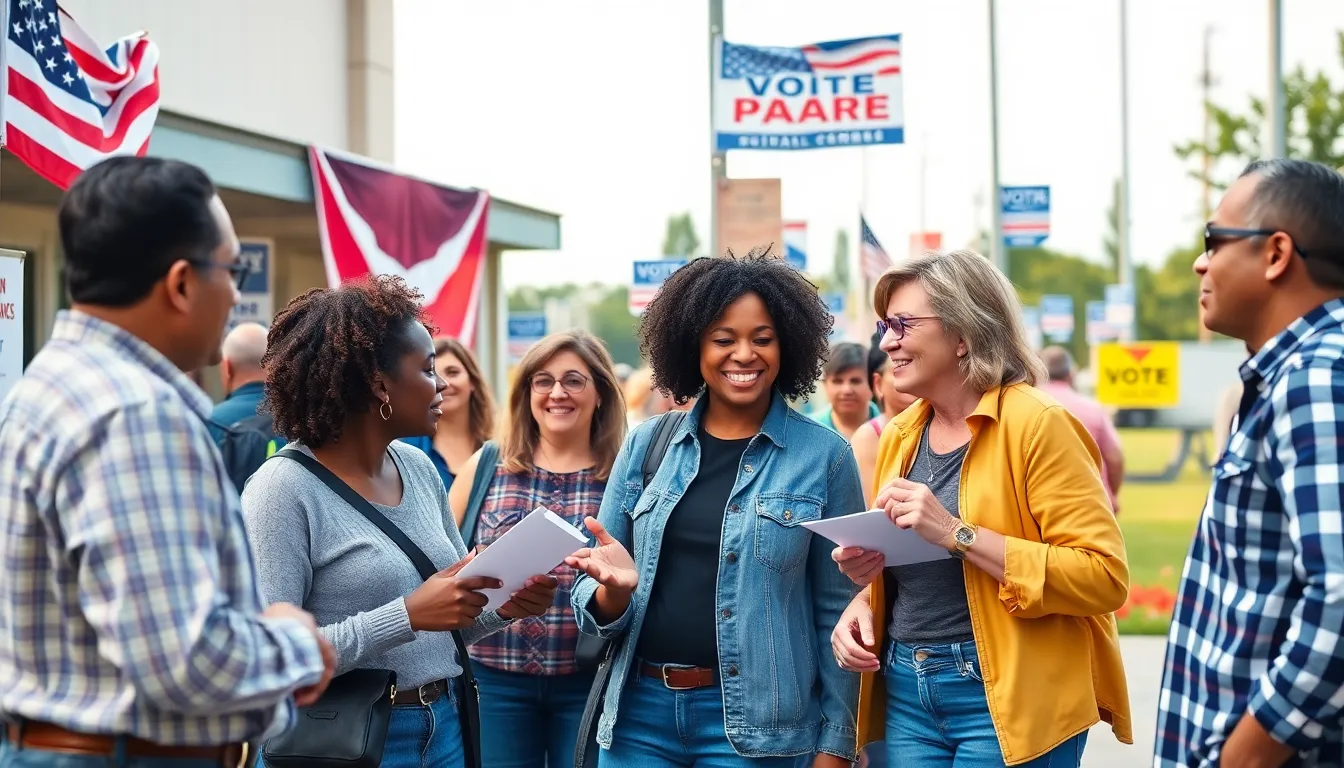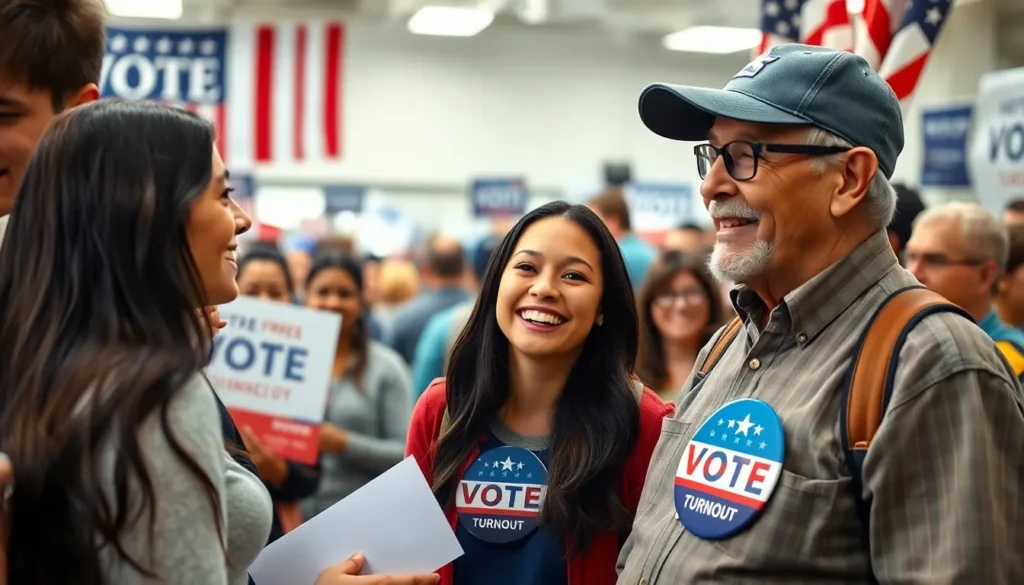As the presidential election approaches, the race is heating up and voters are eager to know who’s leading the polls. With candidates ramping up their campaigns and debates intensifying, public opinion shifts rapidly. Understanding the current standings can provide valuable insights into potential outcomes and voter sentiment.
Polls serve as a snapshot of the political landscape, reflecting not just candidate popularity but also the issues that matter most to voters. From key battleground states to national trends, the data reveals who’s gaining momentum and who’s struggling to keep pace. In this dynamic environment, staying informed about the latest developments is crucial for anyone invested in the electoral process.
Overview of Presidential Polls
Presidential polls measure candidate support across various demographics and regions. They provide insights into voter preferences and potential electoral outcomes. Polling data can assist campaigns in strategizing and addressing key voter concerns.
Types of Polls
- Tracking Polls: Track candidate support over time to highlight changing preferences among voters.
- Swing State Polls: Focus on critical battleground states to assess candidate strength in pivotal areas.
- National Polls: Gauge overall candidate popularity and public opinion on key issues across the nation.
Key Factors Influencing Poll Results
- Economic Conditions: Economic performance often impacts voter sentiments significantly.
- Current Events: Major news events or controversies can shift public opinion swiftly.
- Debate Performance: Candidate performances in debates often result in immediate changes in polling numbers.
Recent Polling Data
| Candidate | Polling Percentage | Date of Polling |
|---|---|---|
| Candidate A | 42% | October 2023 |
| Candidate B | 38% | October 2023 |
| Candidate C | 15% | October 2023 |
Polling data illustrates the competitive nature of the race. It highlights the significance of ongoing voter engagement and responsive campaigning. Candidates continuously adjust their strategies based on these insights to enhance their chances in the election.
Current Standings in the Presidential Polls

Recent polling data reflects the competitive landscape of the presidential race, highlighting key candidates and metrics that shape voter perceptions.
Leading Candidates
Candidates are positioning themselves strongly in the polls as the election approaches. As of October 2023, Candidate A leads with 42% support, followed closely by Candidate B at 38%. Candidate C captures 15% of the voter base. These figures indicate a tightly contested race, emphasizing the importance of outreach and engagement as candidates adapt their messages to resonate with voters. States with high voter turnout, such as Florida and Pennsylvania, play a critical role in influencing overall standings.
Key Metrics Analyzed
Polling organizations analyze several metrics to understand voter preferences and candidate viability. Key metrics include:
- Approval Ratings: Measures how favorable candidates are viewed by voters.
- Demographic Breakdown: Assesses support across various demographic groups, identifying shifts in key voter segments.
- Issue Priorities: Identifies which issues voters prioritize, such as economy, healthcare, and immigration.
- Swing State Trends: Focuses on candidate performance in battleground states, crucial for electoral outcomes.
Understanding these metrics allows candidates to refine their strategies and target specific voter concerns, thus potentially altering the race’s dynamics as it progresses.
Factors Influencing Poll Results
Multiple factors influence poll results, shaping candidate standings and voter sentiments. Key determinants include voter demographics and economic conditions.
Voter Demographics
Voter demographics significantly impact candidate support. Age, gender, race, education, and income levels create distinct voting blocks. For instance, younger voters tend to gravitate toward progressive candidates, while older voters may prefer more traditional options.
Recent polling data reveals shifts in demographic preferences. Candidates with high appeal among minority groups or women often secure a crucial portion of the electorate. As of October 2023, Candidate A captures 56% of African American voters, while Candidate B garners 42% of white working-class voters. Understanding these trends enables candidates to tailor their messages and address specific concerns, enhancing engagement with diverse voter segments.
Economic Impact
Economic conditions strongly influence voter sentiment and poll results. Factors such as unemployment rates, inflation, and overall economic growth shape public perception of candidates. When economic indicators are favorable, candidates aligned with the ruling party often see higher support. Conversely, unfavorable economic conditions typically benefit the opposition.
Data from recent months indicates a correlation between rising inflation and dwindling approval ratings for the incumbent candidate. In September 2023, unemployment fell to 4.2%, yet 58% of voters expressed concern about rising living costs. Candidates who effectively address these economic challenges and propose actionable solutions can sway undecided voters, improving their poll standings and campaign viability.
Comparison with Previous Elections
Comparing current presidential polls to previous elections reveals significant trends in voter behavior and candidate positioning. Historical data show how incumbent approval ratings affect election outcomes. For instance, in the 2016 election, a 40% approval rating for the incumbent correlated with a competitive election. The current approval rating of the incumbent mirrors this reality, standing at 39% as of October 2023.
Polls from earlier elections often highlight shifts in demographic support over time. In 2008, Candidate A captured 50% of African American voters, a trend echoed in recent data, as Candidate A receives 56% support from this group. Polling data from 2012 indicated that issues like healthcare and the economy drove voter turnout, similar to the current election dynamics, where candidates prioritize economic concerns and social justice.
Swing states have historically played crucial roles in determining election results. In 2000, Florida’s electoral votes swung the outcome toward one candidate. Presently, states like Pennsylvania and Florida are again identified as pivotal, with Candidate A holding a narrow lead in these areas.
Recent polling also reveals changes in voter priorities compared to past elections. In 2004, national security dominated voter concerns, while today’s voters emphasize economic stability and healthcare access. This shift reflects evolving societal values and priorities.
Tracking polls provide insights into voter sentiment over time. In 2020, fluctuating support for candidates illustrated the impact of major events. Currently, Candidate B’s support remains stable at 38%, indicating resilience amidst shifting public opinions, similar to patterns seen in past elections during periods of political unrest.
Understanding these historical comparisons enhances insight into the ongoing electoral landscape and allows for better predictions regarding voter behavior in the current election cycle.
The current presidential polls reveal a highly competitive race with shifting voter preferences and critical issues at play. Candidates are adapting their strategies to resonate with diverse demographics while addressing pressing economic concerns. As the election approaches the dynamics may change rapidly, making it essential for candidates to stay in tune with public sentiment.
With significant battleground states like Florida and Pennsylvania poised to influence the outcome, every poll can provide crucial insights into voter behavior. Understanding these trends will be vital for both candidates and voters alike as they navigate this pivotal electoral landscape.





